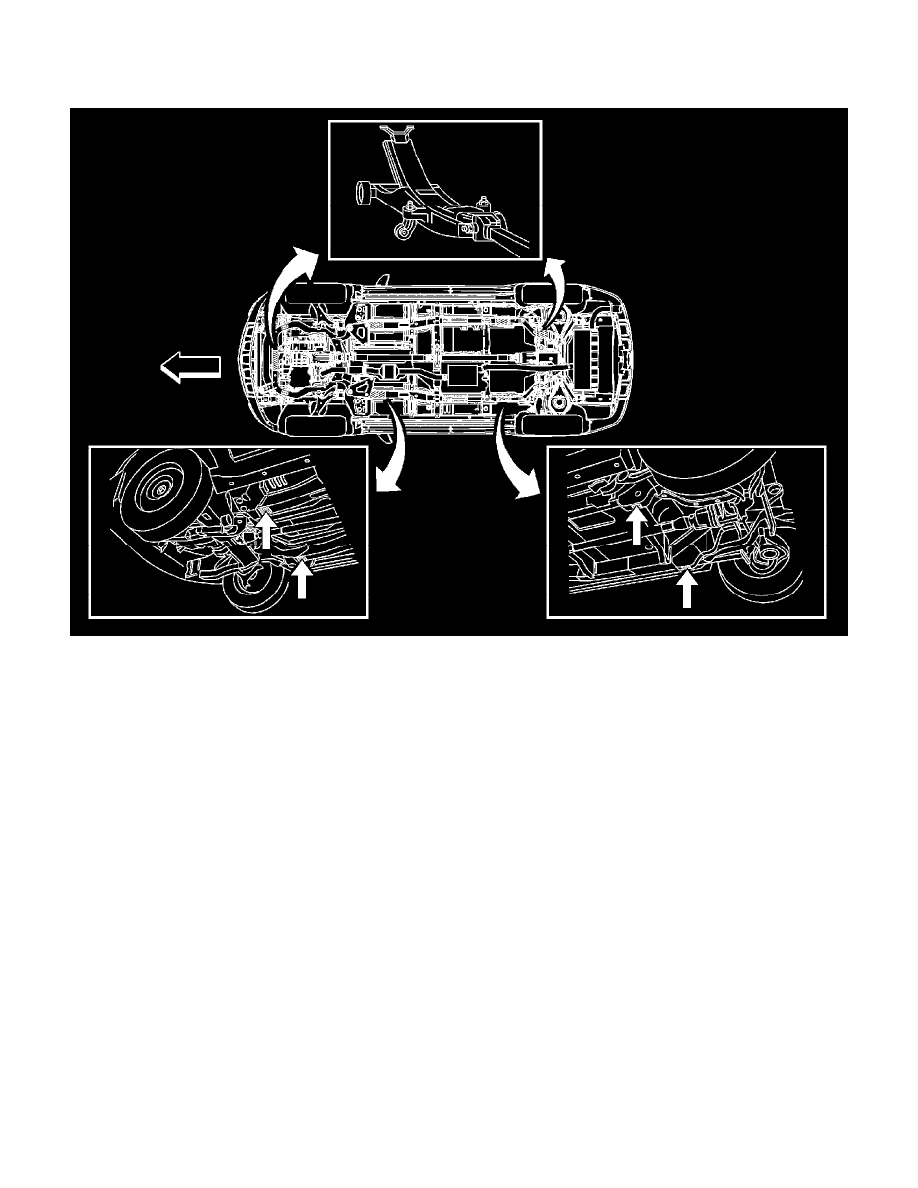Terrain FWD L4-2.4L (2010)

Vehicle Lifting: Service and Repair
Lifting and Jacking the Vehicle
Danger: To avoid any vehicle damage, serious personal injury or death when major components are removed from the vehicle and the vehicle is
supported by a hoist, support the vehicle with jack stands at the opposite end from which the components are being removed and strap the
vehicle to the hoist.
Danger: To avoid any vehicle damage, serious personal injury or death, always use the jackstands to support the vehicle when lifting the
vehicle with a jack.
Caution: Perform the following steps before beginning any vehicle lifting or jacking procedure:
*
Remove or secure all of the vehicle contents in order to avoid any shifting or any movement that may occur during the vehicle lifting or jacking
procedure.
*
The lifting equipment or the jacking equipment weight rating must meet or exceed the weight of the vehicle and any vehicle contents.
*
The lifting equipment or the jacking equipment must meet the operational standards of the lifting equipment or jacking equipment manufacturer.
*
Perform the vehicle lifting or jacking procedure on a clean, hard, dry, level surface.
*
Perform the vehicle lifting or jacking procedure only at the identified lift points. DO NOT allow the lifting equipment or jacking equipment to
contact any other vehicle components.
Failure to perform the previous steps could result in damage to the lifting equipment or the jacking equipment, the vehicle, and/or the vehicle contents.
Vehicle Lifting-Frame Contact Lift
Front Lift Pads
When lifting the vehicle with a frame-contact lift, place the front lift pads approximately 12.2 in (310 mm) inboard from the front pinchweld flanges.
Rear Lift Pads
When lifting the vehicle with a frame-contact lift, place the rear lift pads 10.0 in (255 mm) inboard from the rear pinchweld flanges.
